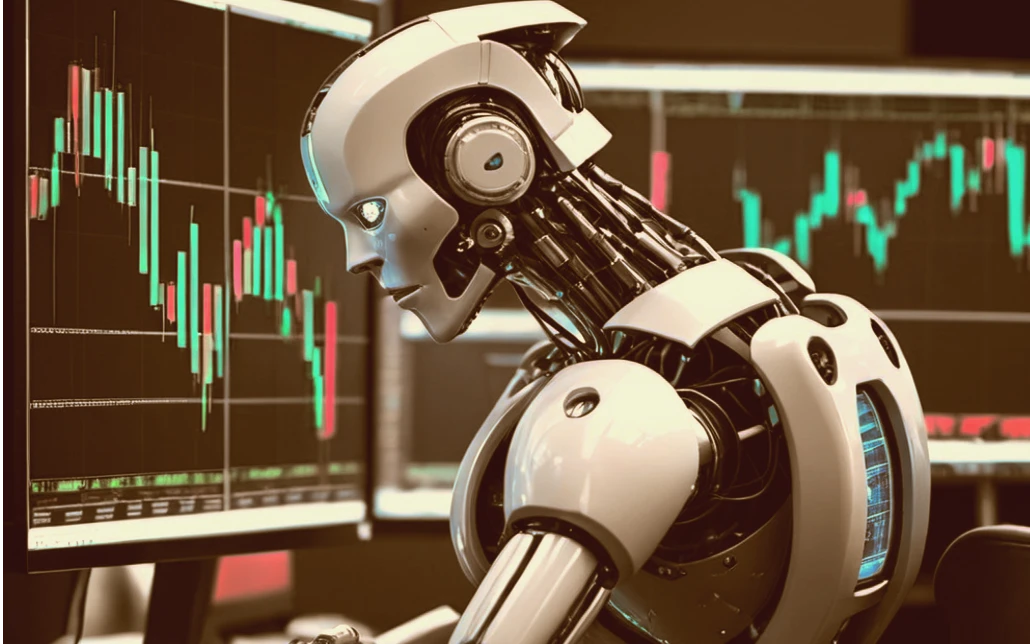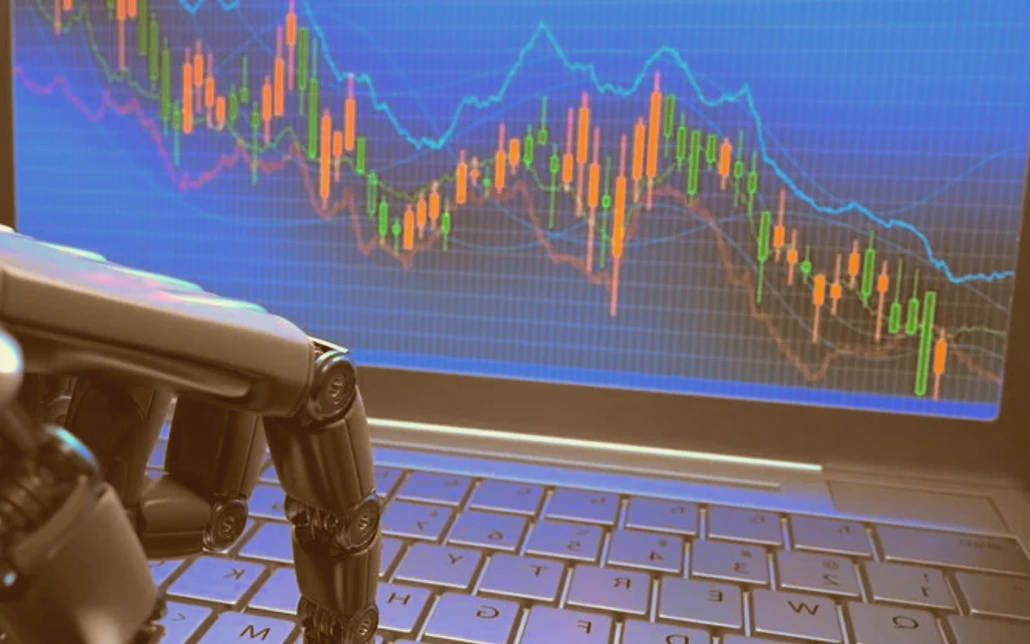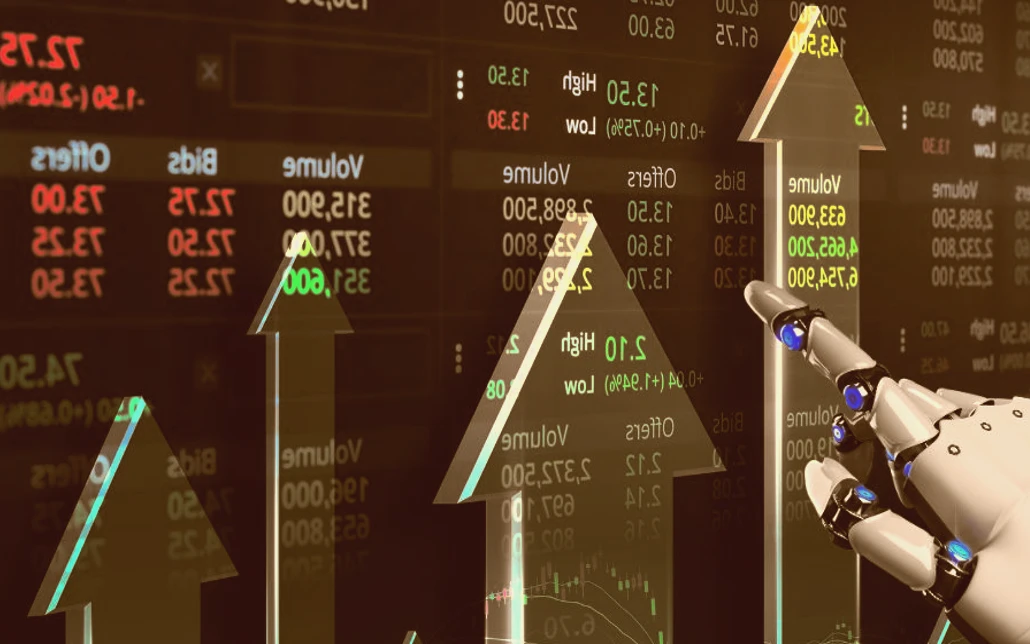Forex Trading Robots Explained
Forex trading robots, also known as automated trading systems, are software programs that use algorithms to manage and execute trades on the forex market. These robots can perform a variety of functions, from simple tasks such as executing buy and sell orders to more complex strategies like analyzing market trends and making trading decisions.
The popularity of forex trading robots has grown significantly due to their ability to trade 24/7, eliminate emotional decision-making, and provide backtesting capabilities. These systems can be a valuable tool for both novice and experienced traders looking to enhance their trading strategies.
Contents
What Are Forex Trading Robots?
Forex trading robots are designed to automate trading activities by using pre-set rules and algorithms. These rules can be based on various technical indicators, market conditions, and trading strategies. The primary goal of these robots is to maximize profits by taking advantage of market opportunities without human intervention.
The algorithms used by forex trading robots can vary significantly, ranging from simple moving averages to complex machine learning models. These robots can be purchased from various vendors or developed by individual traders with programming skills.
Benefits of Using Forex Trading Robots
- Consistency: One of the main advantages of using forex trading robots is their ability to trade consistently without being influenced by emotions. Human traders often make decisions based on fear or greed, leading to inconsistent results. Robots follow their pre-set rules, ensuring consistent execution.
- 24/7 Trading: Forex markets operate 24 hours a day, five days a week. Forex trading robots can monitor the market and execute trades around the clock, ensuring that no trading opportunities are missed.
- Backtesting: Forex trading robots allow traders to backtest their strategies using historical data. This helps traders understand how their strategies would have performed in the past and make necessary adjustments.
- Efficiency: These robots can analyze vast amounts of data and execute trades much faster than a human trader. This efficiency can lead to better trade execution and potentially higher profits.
Drawbacks of Forex Trading Robots
- Over-optimization: One of the main risks associated with forex trading robots is over-optimization. This occurs when a trading strategy is too finely tuned to historical data, resulting in poor performance in live trading conditions.
- Technical Issues: Forex trading robots rely on technology, and technical issues such as software bugs, connectivity problems, or hardware failures can impact their performance.
- Lack of Adaptability: While forex trading robots can execute trades based on pre-set rules, they may struggle to adapt to sudden market changes or unexpected events. Human traders can use their intuition and experience to navigate such situations, whereas robots may not be as flexible.
- Cost: Developing or purchasing a high-quality forex trading robot can be expensive. Additionally, some robots require ongoing subscription fees or maintenance costs.

Types of Forex Trading Robots
Forex trading robots can be classified into various types based on their functionality, complexity, and trading strategies. Understanding these types can help traders choose the right robot for their needs.
Trend Following Robots
Trend following robots are designed to identify and trade in the direction of the prevailing market trend. These robots use technical indicators such as moving averages, trendlines, and momentum oscillators to determine the trend direction.
- Simple Moving Average (SMA): A basic trend-following strategy that uses the average price over a specific period to identify trends. When the price crosses above the SMA, it indicates a potential uptrend, and when it crosses below, it indicates a potential downtrend.
- Exponential Moving Average (EMA): Similar to SMA but gives more weight to recent price data. This makes EMA more responsive to recent price changes and helps in identifying trends more accurately.
- Moving Average Convergence Divergence (MACD): A popular trend-following indicator that uses two moving averages (typically the 12-day EMA and the 26-day EMA) to generate buy and sell signals.
Range Trading Robots
Range trading robots are designed to trade within a defined range, buying at support levels and selling at resistance levels. These robots use technical indicators such as Bollinger Bands, Relative Strength Index (RSI), and support/resistance levels to identify trading opportunities within the range.
- Bollinger Bands: A volatility indicator that consists of a moving average and two standard deviation lines. When the price reaches the upper band, it indicates overbought conditions, and when it reaches the lower band, it indicates oversold conditions.
- Relative Strength Index (RSI): An oscillator that measures the speed and change of price movements. RSI values above 70 indicate overbought conditions, while values below 30 indicate oversold conditions.
- Support and Resistance Levels: Key price levels where the price tends to reverse or consolidate. Range trading robots use these levels to place buy and sell orders.
Scalping Robots
Scalping robots aim to make small profits from numerous trades by taking advantage of small price movements. These robots execute trades quickly and often hold positions for only a few minutes. Scalping requires high-speed execution and low-latency trading platforms.
- High-Frequency Trading (HFT): A type of scalping that involves executing a large number of orders at extremely high speeds. HFT firms use advanced algorithms and high-speed connections to gain a competitive edge.
- Spread Scalping: A strategy that involves taking advantage of the bid-ask spread. Spread scalping robots place buy orders at the bid price and sell orders at the ask price, profiting from the difference.
- Time-Frame Scalping: A strategy that focuses on trading within specific time frames, such as the first and last hours of the trading day. Scalping robots analyze market conditions and execute trades during these periods.

Algorithmic Trading Robots
Algorithmic trading robots use complex mathematical models and algorithms to execute trades. These robots can incorporate multiple strategies, including trend following, range trading, and scalping, to optimize their performance.
- Machine Learning Algorithms: Advanced algorithms that use machine learning techniques to analyze market data and identify trading opportunities. These robots can adapt to changing market conditions and improve their performance over time.
- Quantitative Models: Mathematical models that use statistical techniques to analyze market data and make trading decisions. Quantitative models can incorporate various factors such as price, volume, and volatility to generate buy and sell signals.
- Arbitrage Algorithms: Strategies that exploit price differences between different markets or instruments. Arbitrage robots can execute trades quickly to take advantage of these discrepancies and generate profits.
News Trading Robots
News trading robots analyze economic news releases and market events to make trading decisions. These robots use natural language processing (NLP) and sentiment analysis to interpret news data and predict market reactions.
- Economic Calendar Integration: Robots that integrate with economic calendars to monitor upcoming news events and schedule trades accordingly. These robots can execute trades based on the expected impact of the news.
- Sentiment Analysis: Robots that analyze social media, news articles, and other sources to gauge market sentiment. Positive sentiment may indicate a potential buying opportunity, while negative sentiment may indicate a potential selling opportunity.
- Volatility-Based Strategies: Robots that focus on trading during periods of high volatility caused by news events. These robots aim to capitalize on the increased price movements and generate profits.
How Forex Trading Robots Work
Understanding the mechanics of forex trading robots can help traders utilize them effectively. This section will explain the key components and processes involved in the functioning of forex trading robots.
Algorithm Development
The core of any forex trading robot is its algorithm, which is a set of rules and mathematical models that guide its trading decisions. Developing a robust algorithm involves:
- Defining Trading Strategies: Traders need to specify the strategies that the robot will use, such as trend following, range trading, or scalping. These strategies are based on technical indicators, market conditions, and trading rules.
- Programming the Algorithm: Once the trading strategies are defined, they need to be translated into a programming language that the robot can understand. Popular programming languages for algorithm development include Python, C++, and MQL4 (MetaQuotes Language 4).
- Testing and Optimization: Before deploying the robot in live trading, the algorithm needs to be thoroughly tested and optimized using historical data. This process, known as backtesting, helps identify potential issues and improve the algorithm’s performance.

Data Feed and Market Analysis
Forex trading robots rely on real-time market data to make informed trading decisions. The data feed provides the robot with up-to-date information on currency prices, trading volumes, and market trends. Key components of this process include:
- Data Providers: Robots need access to reliable data providers that offer accurate and timely market data. Popular data providers include Bloomberg, Thomson Reuters, and MetaTrader.
- Technical Indicators: Robots use various technical indicators, such as moving averages, RSI, MACD, and Bollinger Bands, to analyze market conditions and generate trading signals.
- Fundamental Analysis: Some robots also incorporate fundamental analysis, which involves evaluating economic indicators, news events, and geopolitical factors that can impact currency prices.
Trade Execution
Once the robot has analyzed the market data and identified a trading opportunity, it executes the trade based on its pre-set rules. The trade execution process involves:
- Order Placement: The robot places buy or sell orders with the broker, specifying the currency pair, trade size, and price levels. These orders can be market orders (executed at the current market price) or limit orders (executed at a specific price).
- Risk Management: Effective risk management is crucial for successful trading. Robots use various techniques, such as stop-loss orders, take-profit orders, and position sizing, to manage risk and protect profits.
- Monitoring and Adjustment: After placing the order, the robot continuously monitors the trade and market conditions. If necessary, it can adjust the trade parameters, such as moving the stop-loss level or closing the trade early, to optimize performance.
Performance Monitoring and Evaluation
Continuous monitoring and evaluation of the robot’s performance are essential to ensure its effectiveness. Key aspects of this process include:
- Performance Metrics: Traders need to track various performance metrics, such as win rate, profit factor, drawdown, and Sharpe ratio, to assess the robot’s performance.
- Regular Updates: Market conditions can change over time, and trading strategies that were effective in the past may become less effective. Regular updates and optimizations of the algorithm are necessary to maintain its performance.
- Error Handling: Robots should be equipped with error-handling mechanisms to address issues such as connectivity problems, data feed errors, and software bugs. This helps minimize disruptions and ensure smooth operation.
Choosing the Right Forex Trading Robot
Selecting the right forex trading robot can be challenging due to the wide range of options available. Traders need to consider various factors to make an informed decision.
Key Factors to Consider
- Performance Track Record: Evaluate the robot’s historical performance, including its win rate, profit factor, and drawdown. Look for robots with a consistent track record of profitability.
- Strategy Compatibility: Ensure that the robot’s trading strategies align with your trading goals and risk tolerance. For example, if you prefer low-risk trading, choose a robot with conservative strategies.
- Cost and Fees: Consider the cost of purchasing or subscribing to the robot. Some robots require a one-time payment, while others have ongoing subscription fees. Factor in these costs when evaluating the robot’s potential profitability.
- Ease of Use: Choose a robot that is user-friendly and easy to set up. Some robots come with detailed user guides and customer support to help you get started.
- Reputation and Reviews: Research the robot’s reputation and read reviews from other traders. Look for robots with positive feedback and a good reputation in the trading community.
Popular Forex Trading Robots
Here is a table summarizing some popular forex trading robots and their key features:
| Robot Name | Strategy | Key Features | Cost | Platform |
|---|---|---|---|---|
| Forixo.Trade | Multiple | Trend-Signal-Reversal, Hedging, Trailing Stop Loss, Scalping, Trend Following | Call | MetaTrader 4/5 |
| Forex Fury | Scalping | High-frequency trading, backtesting | $229/year | MetaTrader 4/5 |
| FAP Turbo | Trend Following | Adaptive market analysis, low drawdown | $397 one-time | MetaTrader 4 |
| Forex Diamond | Trend and Range | Dynamic trading logic, multiple strategies | $297 one-time | MetaTrader 4 |
| GPS Forex Robot | Trend Following | Adaptive trading algorithms, low-risk strategies | $149 one-time | MetaTrader 4 |
| Odin Forex Robot | Algorithmic | Advanced trading algorithms, high win rate | $199 one-time | MetaTrader 4 |
Tips for Using Forex Trading Robots
- Start with a Demo Account: Before deploying the robot in live trading, test it on a demo account to understand its performance and make necessary adjustments.
- Monitor Performance Regularly: Continuously monitor the robot’s performance and make adjustments as needed. Market conditions can change, and regular updates are essential to maintain profitability.
- Diversify Strategies: Consider using multiple robots with different strategies to diversify your trading approach and reduce risk.
- Risk Management: Implement effective risk management techniques, such as setting stop-loss levels and position sizing, to protect your capital.
- Stay Informed: Keep yourself informed about market trends, economic news, and other factors that can impact the forex market. This knowledge can help you make better decisions and optimize the robot’s performance.

Developing Your Own Forex Trading Robot
For traders with programming skills, developing a custom forex trading robot can be a rewarding experience. This section will provide a step-by-step guide to creating your own forex trading robot.
Step 1: Define Your Trading Strategy
The first step in developing a forex trading robot is to define your trading strategy. Consider the following aspects:
- Trading Style: Determine your trading style, such as trend following, range trading, or scalping. Your trading style will influence the choice of technical indicators and trading rules.
- Technical Indicators: Choose the technical indicators that will be used to generate trading signals. Common indicators include moving averages, RSI, MACD, and Bollinger Bands.
- Entry and Exit Rules: Define the rules for entering and exiting trades. Specify the conditions that must be met for the robot to place a buy or sell order.
- Risk Management: Implement risk management techniques, such as setting stop-loss levels, take-profit levels, and position sizing rules.
Step 2: Choose a Programming Language
Selecting the right programming language is crucial for developing a forex trading robot. Popular programming languages for algorithmic trading include:
- Python: Known for its simplicity and versatility, Python is a popular choice for developing trading algorithms. It offers extensive libraries for data analysis, backtesting, and machine learning.
- MQL4/MQL5: MetaQuotes Language 4 and 5 are used for developing trading algorithms on the MetaTrader platform. These languages are specifically designed for trading and offer built-in functions for technical analysis and trade execution.
- C++: Known for its speed and efficiency, C++ is ideal for developing high-frequency trading algorithms. However, it has a steeper learning curve compared to Python and MQL.
Step 3: Develop and Test the Algorithm
Once you have defined your trading strategy and chosen a programming language, it’s time to develop the algorithm. Follow these steps:
- Write the Code: Translate your trading strategy into code using the chosen programming language. Ensure that the code includes the entry and exit rules, risk management techniques, and trade execution logic.
- Backtest the Algorithm: Test the algorithm using historical market data to evaluate its performance. Backtesting helps identify potential issues and optimize the algorithm for better results.
- Optimize the Parameters: Adjust the parameters of your trading strategy, such as indicator settings and risk management rules, to improve the algorithm’s performance. Use techniques like parameter optimization and walk-forward analysis.
- Simulate Live Trading: Before deploying the robot in live trading, simulate live trading conditions using a demo account. This helps you understand how the robot performs in real-time market conditions.
Step 4: Deploy and Monitor the Robot
After thorough testing and optimization, you can deploy the forex trading robot in live trading. Follow these steps:
- Choose a Broker: Select a reliable broker that supports automated trading and offers competitive spreads and execution speeds.
- Set Up the Robot: Configure the robot on your trading platform and ensure that it is connected to the broker’s servers.
- Monitor Performance: Continuously monitor the robot’s performance and make adjustments as needed. Regularly update the algorithm to adapt to changing market conditions.
- Implement Risk Management: Ensure that the robot follows your risk management rules and protects your capital. Regularly review and adjust the risk management parameters.
FAQs
Forex trading robots are automated systems that use algorithms to manage and execute trades in the forex market. They can perform tasks such as executing buy and sell orders, analyzing market trends, and making trading decisions based on predefined rules. These robots operate without human intervention, providing a consistent approach to trading.
Forex trading robots use algorithms to analyze market data and identify trading opportunities. They operate based on pre-set strategies and rules, incorporating technical indicators and market conditions. The robots autonomously execute trades, relying on real-time data to make informed decisions and ensure timely execution.
Using forex trading robots offers several advantages. They provide consistent execution by eliminating emotional decision-making, which often leads to inconsistent results in manual trading. Additionally, these robots can trade 24/7, ensuring no trading opportunities are missed due to market hours. They also allow for backtesting, enabling traders to evaluate how their strategies would have performed historically and make necessary adjustments. Furthermore, forex trading robots can process vast amounts of data and execute trades more efficiently than human traders, potentially leading to better trade outcomes.
Despite their benefits, forex trading robots also have some drawbacks. One significant risk is over-optimization, where a strategy is too finely tuned to historical data, resulting in poor performance in live trading conditions. Technical issues such as software bugs, connectivity problems, or hardware failures can also affect their performance. Additionally, these robots may struggle to adapt to sudden market changes or unexpected events, unlike human traders who can use intuition and experience. Moreover, developing or purchasing high-quality forex trading robots can be expensive, with some requiring ongoing subscription fees.
Forex trading robots come in various types, each designed for specific trading strategies. Trend following robots identify and trade in the direction of market trends using indicators like moving averages. Range trading robots operate within defined price ranges, buying at support and selling at resistance. Scalping robots focus on making small profits from numerous trades by exploiting minor price movements. Algorithmic trading robots use complex mathematical models and combine multiple strategies for optimal performance. News trading robots analyze economic news and market events to make informed trading decisions.
Choosing the right forex trading robot involves several considerations. First, evaluate the robot’s historical performance, looking for consistent profitability. Ensure that the robot’s trading strategies align with your trading goals and risk tolerance. Consider the cost of the robot, including any subscription fees, and choose one that offers good value for money. Ease of use is another important factor; select a robot that is user-friendly and easy to set up. Lastly, research the robot’s reputation and read reviews from other traders to gauge its reliability and effectiveness.
Yes, traders with programming skills can develop their own forex trading robots. The process involves defining a clear trading strategy, choosing an appropriate programming language, developing and testing the algorithm, and finally deploying the robot for live trading. This allows for customized trading strategies tailored to individual preferences and market conditions.
Several programming languages are popular for developing forex trading robots. Python is widely used due to its simplicity and versatility, offering extensive libraries for data analysis, backtesting, and machine learning. MQL4 and MQL5, specific to the MetaTrader platform, are designed for trading and provide built-in functions for technical analysis and trade execution. C++ is another option, known for its speed and efficiency, making it suitable for high-frequency trading algorithms.
When using forex trading robots, it’s crucial to start with a demo account to test their performance before live trading. Regularly monitor the robot’s performance and make necessary adjustments to ensure it adapts to changing market conditions. Diversifying your trading approach by using multiple robots with different strategies can help reduce risk. Implement effective risk management techniques, such as setting stop-loss levels and appropriate position sizing, to protect your capital. Staying informed about market trends and economic news will also help you make better decisions and optimize the robot’s performance.
Forex trading robots can be suitable for beginners as they automate trading activities and remove the emotional aspect of trading, which often leads to mistakes. However, beginners should thoroughly research and test robots on demo accounts before committing to live trading. Understanding the underlying trading strategies and implementing robust risk management techniques are essential for beginners to use these robots effectively.
Conclusion
Forex trading robots offer a powerful tool for automating trading activities and optimizing trading strategies. They provide numerous benefits, including consistent execution, 24/7 trading, and backtesting capabilities. However, they also come with challenges such as over-optimization, technical issues, and lack of adaptability.





Leave a Reply
Want to join the discussion?Feel free to contribute!